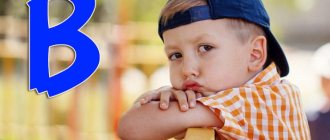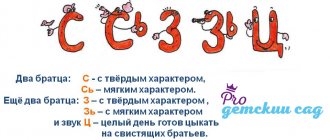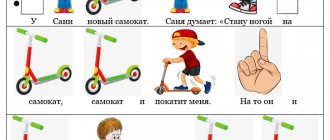Sh pronunciation is normal
This sound is the basic one in the hissing group. Having mastered its articulation, the child will easily learn to correctly pronounce other sounds from this group. The lips take a “horn” position: they are pushed forward a little so that a “window” shape is obtained. When pronouncing a sound, the teeth must be closed.
The tongue should be in a “cup” position: the tip is behind the upper teeth, and its sides are pressed tightly against the teeth. This allows you to direct the exhaled stream in the middle. If everything is done correctly, it will turn out wide and warm. The vocal cords are open, so Ш is a voiceless consonant.
DO YOU NEED TO CONTACT A Speech Pathologist?
Regardless of what speech defects a child has, you need to consult a speech therapist before doing sound production exercises at home. Only a specialist can correctly identify the causes of incorrect pronunciation and choose the optimal method to overcome it. If the cause of speech defects lies in physiological characteristics, then only a doctor can give a direction for cutting the frenulum or prescribe an exercise to correct the bite. If, after the first consultation and long-term exercises at home to produce the sound Ш, the result is not obtained, then you need to contact a specialist again, and you may need to conduct classes with a speech therapist several times a week.
Types and mechanisms of violations
Incorrect pronunciation of a hissing group is called sigmatism, and their replacement with other sounds is called parasigmatism. Sh may be absent from a child’s speech, but he will not replace it with other phonemes. There are several types of hissing sigmatism, differing in the mechanism of occurrence:
- Interdental – speech with such distortion is called a lisp. With this sigmatism, the tongue does not take the desired “cup” position, but passes between the teeth. The cause may be a short hyoid frenulum; high and narrow sky.
- Lateral - in speech, instead of Ш, a sound is produced that has a “squelching” sound. During pronunciation, one corner of the lips rises higher than the other; the lower jaw is also shifted to one side; the “cup” shape does not work out because the back of the tongue forms a connection with the dental alveoli on only one side. The reason for the appearance of such distortion may be weak tone of the articulatory muscles and incorrect bite.
- Nasal - instead of Ш, the child pronounces X with a nasal connotation. The tongue is in a lower position, and the back is raised up. It is because of the high tension on the back of the tongue that this sigmatism appears.
Depending on the type of hissing sigmatism, the speech therapist will select the method of sound production.
What prevents a child from “hissing”?
There are two groups of reasons why babies fail to pronounce the sound “Ш” correctly. Physiological reasons include:
- Insufficient development and immobility of the articulatory apparatus;
- Malocclusion (often caused by prolonged use of a pacifier);
- Short frenulum of the tongue;
- High palate;
- Oral diseases;
- Difficulties in phonemic perception (the child does not distinguish some sounds by ear);
- Hearing impairment;
The second group of factors are the mistakes of adults who are around the child.
- “Lisping” from adults;
- Incorrect pronunciation by adults (children always repeat after us).
Speech therapy diagnostics
The speech therapist evaluates the development of all components of speech to determine a speech defect. In case of distorted pronunciation of sounds during diagnosis, he pays special attention to:
- appearance of the lips, state of the bite, muscle tone of the tongue;
- articulatory and facial motor skills;
- duration and force of exhalation;
- pronunciation of sound in isolation, in syllables, words, phrases and coherent speech;
- whether the child distinguishes it from other phonemes.
When assessing the anatomy of the articulatory apparatus, the specialist looks at the bite, palate, appearance of the tongue (too narrow or clumsy wide), and the hyoid frenulum. If there are any deviations that may be the cause of the distortion, the speech therapist can refer you to other specialists (surgeon, orthodontist).
When checking the work of facial muscles, the speech therapist asks the child to depict emotions (joy, sadness, surprise, etc.); checks how the facial muscles work individually (asks you to raise your eyebrows, smile, etc.); In addition to motor skills, the child is shown images of various emotions and must choose the appropriate mood for each picture.
During the diagnosis of articulatory motor skills, the speech therapist gives tasks for statics (retention) and dynamics:
- Smile, stretch out your lips in a “tube” or take a position as when pronouncing O. You need to fix them in a certain position for a few seconds.
- Move your jaw in different directions.
- Relax your tongue, make it wide, place and hold it on your lower lip, or make it narrow, extending it as far as possible.
- Perform the “cup” exercise.
- Raise - lower the tongue.
- Move them in different directions.
- Draw a horse.
All exercises are performed by demonstration, that is, the adult shows first, and the child then repeats. The speech therapist notes from what time the child was able to complete the task correctly or when he failed; draws attention to the state of muscle tone of the articulatory apparatus.
To check the strength and duration of exhalation, it is suggested to perform the following tasks:
- blow off a light object (feather, piece of cotton wool);
- play the game “Who will kick the ball further” - the child competes with an adult who will blow out the object further;
- play the pipe.
Before performing tasks, the speech therapist explains how to breathe correctly. During diagnosis, he also pays attention to the formation of speech breathing.
When examining the sound-pronunciation aspect of speech, the speech therapist examines all groups of sounds. When a child pronounces a sound, the speech therapist pays attention to the position of the articulation organs. At first, the phoneme is pronounced separately from the others. Then in various syllables (SHA, OSH, USHU, ShPA, etc.); in words, and the sound must be at the beginning, middle or end (HAT, MOUSE, RESED, etc.).
Then the speech material is complicated, and the child repeats phrases and sentences after the adult (BIG EARS, DASHIN'S FUR COAT, WIDE SCARF, etc.). To check the pronunciation of Ш in independent coherent speech, use the following tasks:
- make up a phrase/sentence from the given words;
- who can name more objects that have Sh in their names;
- tell what is drawn in the plot picture.
Speech and visual material should be selected taking into account the child’s age. When checking the pronunciation of a particular sound, you do not need to use words containing mixed groups and oppositional phonemes.
The speech therapist also checks the state of phonemic hearing and the skill of sound-letter analysis. For this purpose, special tasks are selected:
- do some action after hearing a given sound (it is pronounced separately, in combination with other phonemes);
- Determine the position of a sound in a word.
Based on the results of the examination, the speech therapist draws up a plan of correctional work and selects appropriate methods of sound production.
Pronunciation check
Parents can check the correct pronunciation of sounds by their child themselves. There are different tests for this. You can use the same technique with which speech therapists evaluate a child’s speech at the first appointment: ask to pronounce words or syllables containing hissing sounds (for example, noise, school, came, bumblebee).
To pronounce W correctly, the tongue should be like a ladle, located in the center of the oral cavity, and not stick out forward. It is important that the tip points upward.
The verification should be carried out in stages:
- The first stage is a general check. You need to ask the child to say a couple of easy sentences that contain words with a letter (for example, “you should wear a scarf in winter,” “the cat caught the mouse”). Next, you need to move on to the pronunciation of individual words (edge, hat, good, porridge);
- the second stage is checking the sound of Ш in isolation. Attention is paid to syllables. You need to ask the baby to say “OSH”, “SHA”, “OSHO”, “USHU”. This will allow you to find out how well the child can pronounce sounds. It happens that such a check reveals problems with vowel sounds. Therefore, it is recommended to vary the syllables;
- the third stage is testing in individual syllables with voiceless and voiced consonants.
To check the pronunciation of different sounds, there are special cards with bright pictures. They are sold in children's stores. Thanks to such cards, the test can be carried out in the form of an enjoyable game.
Articulation and breathing exercises
Before moving on to sound production, the desired articulatory pattern is formed and the strength and duration of exhalation is trained. To pronounce sibilants correctly, the child is taught to make his tongue wide and raise it. The main exercise in the complex is “Cup”. It is this position that forms the basis for the correct articulation of sibilants.
You can begin to perform it once you have developed the ability to make and keep your tongue wide.
First, the classes develop the ability to relax the tongue. To do this, perform patting movements with your lips or lightly bite them with your teeth - these are options for self-massage. They also train in holding the tongue in this position for some time. If difficulties arise with lifting it, select exercises to practice the upper position (“Horse”, “Mushroom”, “Brush your upper teeth” and other similar tasks).
After the child succeeds in all of the above, they begin to perform the “Cup” exercise. The child raises the tip and lateral edges of the tongue and holds them in this position. To increase the effect, you can pour a little water into the “Cup” so that the baby tries to hold it.
Other exercises are also recommended:
- To complete this task you will need cotton wool. A wide tongue is placed on the lower lip. The child says an elongated F and tries to blow off the cotton wool as far as possible.
- The wide tip of the tongue is placed on the upper lip, and the side edges should be pressed tightly. A piece of cotton wool or a feather is placed on the tip of the nose. The child tries to blow it off by holding his tongue in the upper position. He will be able to do this if the air stream passes through the middle.
The listed tasks are aimed not only at developing a long exhalation, but also develop the ability to relax the tongue, make it wide, and in this state lift and hold it behind the teeth. When the speech therapist sees that the child can maintain the necessary articulatory postures, he begins to set the Sh. If the movements are not sufficiently formed and the muscles of the tongue are not strengthened, then the child will not be able to fix the correct position, and the sound will be pronounced only with mechanical assistance. Therefore, the preparatory stage is mandatory in correctional work.
The described exercises for sibilants are also used to correct the pronunciation of a sonorant group of sounds, because when they are pronounced, the tongue also takes an upper position.
Study Materials
Poetry
* * * What do we have in the forest starting with the letter Sh? This cone flopped, rustling. A bumblebee and a hornet are noisily rummaging through the porridge. Insects rustle in the rose hips. What else in the forest begins with the letter Sh? Noise and rustling near the hut.
Poems about the letter "SH"
Puzzles
* * * Together Pasha and Yegor set up a tent in the field. Right next to the hut, And the tent became a letter...
Riddles about the letter "SH"
Tongue Twisters
* * * The letter Sh bought silk. The letter knows a lot about silk. She sews shorts, skirts, hats, shawls, even fur coats from silk.
Tongue twisters starting with the letter "SH"
Fairy tales
About the letter Sh
Once upon a time there lived in the ABC the letter Ш. It was already quite old, however, like all letters, and stood almost at the very end of the Alphabet. She was all rough, had a slight lisp, most often spoke in a whisper and loved to dress in woolen things.
She had a sister - the letter Ш - a terrible dandy. She was very cheerful and mischievous: she constantly chirped and pinched. She didn't want to look like her older sister, so she gave herself a ponytail. She loved to tickle the letter Sh with this tail, and she shied away from her and hissed angrily, wrapping herself in a shawl:
- Well, stop joking and playing pranks, otherwise I’ll make you pay a fine!
The letter Ш squinted and laughed, but then she felt sorry for her sister, she spared her and kissed her on the cheek. Read more the tale about the letter “SH”
Setting option when there is no sound
If a child does not have Sh in his speech, and he does not use other phonemes instead, then the main emphasis is on articulatory gymnastics, namely the formation of a wide tongue rise. When the “Cup” exercise is performed correctly, the speech therapist begins to produce sound.
He asks the child to make a “Cup” and hide his tongue behind his teeth. Next, the speech therapist explains that you need to blow on your tongue and then you will get Sh. If the child pronounces X, then a clear hissing sound will not be produced. For convenience, they suggest pronouncing C, only the tongue is behind the upper teeth. To develop the correct pronunciation, you need to repeat it many times. To increase the effectiveness of classes, the speech therapist uses didactic games.
We teach a child to say the sound [Ш] quickly
An individual speech therapy session on sound production [Ш] always begins with articulation and breathing exercises. This is necessary to create a basis for correct pronunciation.
Sound production
A simple way to make the sound [Ш] is from the correct [S]. To do this, you need to take a spatula and ask the child to say “SA-SA-SA”, at which time you need to lift the tongue with the tool.
You can try to act by imitation. They bring their index finger to their lips and say: “When mom is sleeping, the baby says, “quiet, quiet shhhhh.”
After calling an isolated sound, the child is shown the “hissing goose” symbol, which will indicate a new sound.
Automation
Individual lessons on sound automation [Ш] are conducted using different materials. You can add walking games, puzzles and other interesting exercise equipment. All this will diversify the lesson.
Important! It is useful to combine automation with physical exercise. For example, with jumping or active games - leapfrog, ball and others.
The sequence of automation cannot be broken - forward syllables, reverse syllables, words, phrases, sentences, poems and tongue twisters.
Lesson on differentiating sounds [С] and [Ш]
An important step in correcting sound pronunciation is separating similar sounds. To do this, sound symbols must be used. For those who whistle, this is a “pump” or a “kettle”.
Each word can also be designated by a symbol - this will facilitate the memorization process
A lesson on differentiating sounds [С]-[Ш] is carried out on the basis of different materials. The child can be asked to repeat different syllable paths: SA-SA-SHA, SHA-SA-SHA, SHA-SHA-SA, etc. An adult can say the beginning of the word and invite the child to insert the correct sound himself: ma...ina,...ina,...apka, etc.
Establishing and automating the correct sound [Ш] can take a lot of time, but it is best done in preschool age. In this case, the defect will be easy to fix. The baby will be able to pronounce the sound correctly quickly with constant practice.
Setting Sh with distorted pronunciation
The method of presentation depends on the type of sigmatism. Each of them has its own reasons, so the speech therapist selects techniques to correct them:
- With the interdental variant, exactly the same preparatory work is carried out as in the absence of a phoneme in speech. The emphasis is on raising the tongue, so they additionally practice clear pronunciation of T, from which the sound will be made. When pronouncing T, the child keeps his mouth open. You need to pronounce the sound slowly, adding aspiration. Gradually, the speech therapist teaches the child to lengthen the air stream and not touch the tubercles with the tongue.
- For lateral distortion, a mechanical method is used. Before insertion, the lateral edges of the tongue are strengthened; They teach you to raise and hold your tongue behind your teeth, and form a strong, long, directed exhalation. For placement, you can use a special speech therapy probe or a teaspoon (if you are doing correction at home). Using a probe or spoon, the front part of the tongue is lifted and removed behind the upper teeth, moving it closer to the tubercles. The child bites the spoon and pronounces S. Gradually, the duration of exhalation increases, and the ability to lift and hold the tongue in the desired position independently is formed.
- The method of setting from P - this method is rarely used, because to pronounce a sonorant group the tongue occupies a similar position as for sibilants. Therefore, few children can speak R correctly if they have problems with the pronunciation of sibilants. The child, keeping his mouth open, pronounces R silently. An adult, using the handle of a teaspoon, stops the vibration. The result is hissing. Gradually, the spoon is used less, the child learns to keep his teeth together and make a hissing sound without mechanical assistance.
- Method of setting from whistlers. The child pronounces an elongated S, the adult places a teaspoon or probe under the front edge of the tongue, lifts it and moves it deeper into the mouth until he hears Sh in speech. Gradually, the child learns to independently lift and cup his tongue.
If there are disturbances in the tone of the tongue muscles, a course of speech therapy massage is prescribed. It is performed using probes (for this you need to undergo special training) or fingers wearing sterile disposable gloves. But along with the massage you need to do articulation gymnastics. Then the preparation of the organs of articulation for the production of Ш will be more effective.
The sound Ш is the main one in its group. Therefore, having corrected its pronunciation, it is easy to add other sibilants. You just need to explain the difference in articulation so that the child does not mix them up in speech. You need to start producing other hissing sounds when you have passed the stage of automating the sound Ш in speech.
REASONS FOR INCORRECT PRONUNCIATION
Speech therapists divide all causes of incorrect pronunciation into two groups: physiological and errors on the part of adults. The first group of reasons includes the following: - underdevelopment of the speech apparatus; — incorrectly formed bite, most often this occurs with prolonged use of a pacifier; - anatomical features of the oral cavity, for example, a short frenulum or a high palate; - diseases of the oral cavity; - problems with phonemic hearing - the child does not hear or perceive some sounds. One of the most common causes of speech defects in children are factors of the second group. This includes the incorrect pronunciation of Ш (in adults who have a lisp) and the “lisping” of others. Distortion of the voice and some words by adults leads to the fact that the baby remembers the wrong sounds and later inherits them in his conversation. To prevent this, you need to talk to your baby clearly and clearly from birth, and as soon as he starts chatting, immediately correct the slips, otherwise it will be more difficult to do this with age.
Mimic gymnastics
This is a special part of articulatory gymnastics for the sound Ш, toning the facial muscles, preparing them for work.
Mimic gymnastics consists of a set of exercises:
- Move your lips left and right. 5 times in one direction and the other. After a short pause, repeat 4 more times.
- Inflating now the right, now the left cheek. Repeats 5 times with short pauses.
- Wrinkling the eyebrows and puffing out the cheeks to create an angry expression. Repeat 4 – 5 times.
- Raising the eyebrows to create a surprised face. Repeat 4 – 5 times.
- Alternating frequent blinking and slow opening and closing of the eyes.
- Image of any funny faces.
To make it more interesting for your child to study, you can use rhymes and stories to accompany the exercises. This will have double benefits - the development of facial expressions and memory training.











